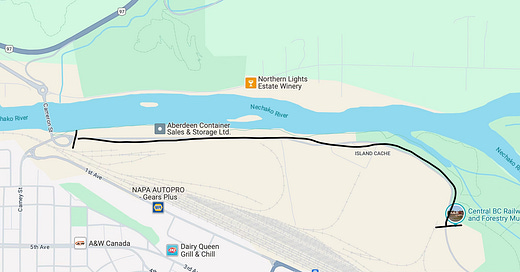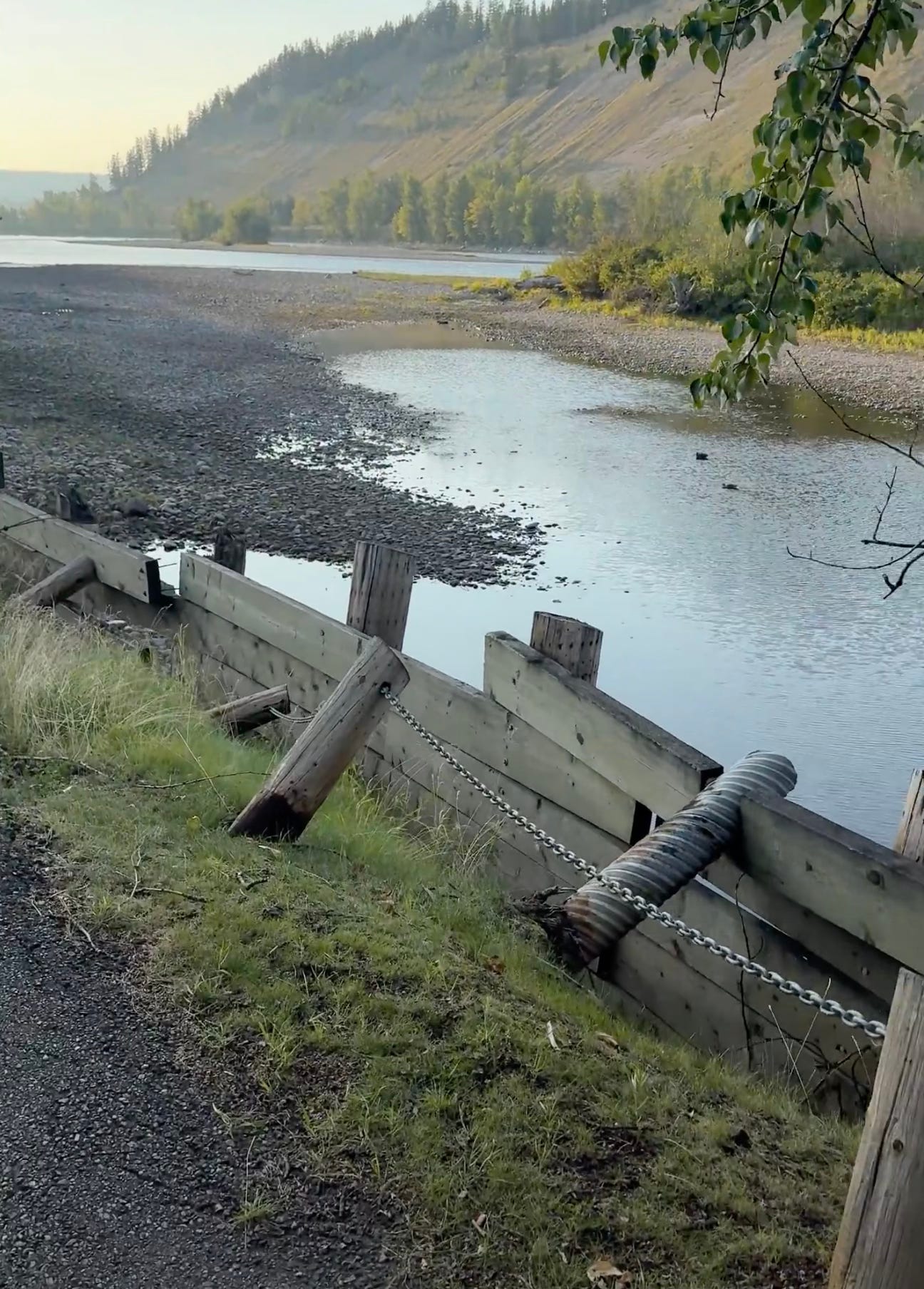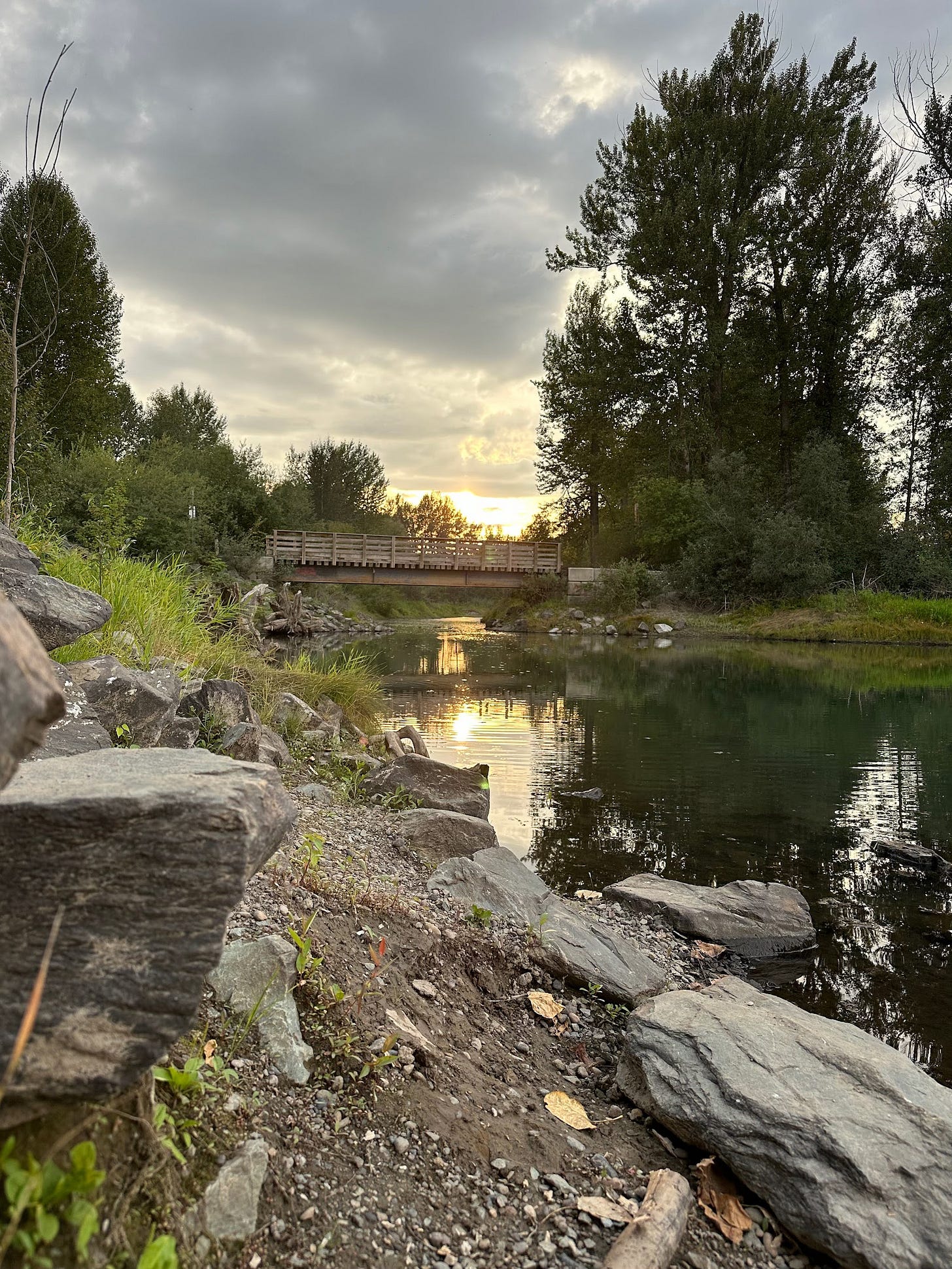Happy Friday!
I’m writing this newsletter off the back of a very exhausting couple of work trips, first in small-town Northern Alberta and then a week working out of Cranbrook and the Eastern Kootenays area. A lot of reflections from visiting about a half dozen small Alberta/Kootenay towns that may find their way in to a future newsletter but that’s for another day.
I also want to say a big ol’ welcome to all the new subscribers. I don’t quite understand Substack’s discovery mechanism well enough to know how you all find this place but since friend-of-the-newsletter
resumed his writing, I’ve accumulated quite a large stack of new readers - so WELCOME.For the uninitiated, this newsletter lacks the polish, journalistic standards, and talented writing of Andrew but it attempts to make up for it in unhinged rambling and an explicit overuse of dashes - if you enjoy those things, you’ll like it here.
Anyways! That’s enough intro. Today’s topic was heavily teased in the last issue so without further ado, let’s talk about PG’s completely and utterly neglected riverfront trail system and why we should care about it.
What river front are we talking about?
For the purposes of this newsletter, I am talking about the stretch of trail that runs between the Cameron St. Bridge and Cottonwood Island Park which I believe I have heard called “The Heritage Trail” but you could copy and paste a lot of these rants and ramblings to a good portion of the river front property in Prince George.
I want to acknowledge that there are some undeniable historical decisions to navigate in that PG plopped a huge portion of its heavy industry along the same stretch of river. In no particular order, we have Brink’s mill, Canfor’s water treatment plant, about 5km of railyard, Lakeland mills, a handful of heavy duty mechanic yards, and a half a dozen other buildings and yards that I genuinely can’t tell if they’re abandoned or not.
Because of that initial decision to make the riverfront the industrial hub area, I can acknowledge that it’s unreasonable to think that we could ever magically get this stretch of trail systems to be Stanley Park level sanctuary of trails and I want to say that my expectations of the ceiling of these trails is managed.
The “infinite potential” of PG’s river front.
Despite everything I just said, I cannot stress enough how beautiful parts of this trail system are and if you haven’t walked it on a crispy Fall evening, then this is absolutely your sign to go check it out.
There are beautiful wooden boardwalks, large sections of compacted gravel, and beautiful old bridges that criss cross the backwash of the river channels.
For massive sections at a time, you really do get the sense of what could be in this trail system. We are regularly see running groups, young families, solo runners, old friends catching up with Tim Hortons cups full of tea or coffee, and just a general feeling of a community hub on this network.
The trail system is too long to say it feels busy but rather it feels “alive” and a place where you might run into your boss and their kids out for a walk or your retired grade 6 teacher out for an evening stroll with her husband.
It’s quaint.
It’s the kind of place Prince George doesn’t have a ton of within city limits.
The Part You Can’t Ignore
This particular image is probably the best I can show that is a juxtaposition that puts what is versus what should be. The beautiful view, old growth trees against the beautiful PG cutbacks but a trail system that is unsafe, unaccessible, and crumbling slowly in to the Nechako river.
Large sections of the trail look like this.
Certain sections have concrete barriers that block you from entering or signs up that point you toward an inside route (that takes you close to the road/industrial area and further from the original trail system off the river) so I understand that the City has done what they can to manage their legal risk of folks who might twist an ankle or fall off the side.
When I look back at what the city has done over the last few years, I can only say I’m a bit confused.
I know criticizing the City’s spending is a bit of a snooze fest but as someone who now regularly walks this trail system, I am really, really confused as to where that $150,000 went.
Curtis Armstrong wrote a follow-up article in the Citizen basically echoing this sentiment with some questions around the entire trail system and the poor strategy of ripping out poorly planned asphalt to make the trail system even less accessible.
If you walk this trail system, the question I would encourage you to hold in your head is “is the city repairing this trail system to make it more enjoyable or are they trying to do the bare minimum to protect themselves from possible lawsuits?”
Because every sign, every closed walkway, every picnic table with yellow tape around it feels a lot like the latter.
Why don’t we get to have nice things?
BE WARNED: my apologies in advance - this sections gets into VERY boring municipal budget things but I promise you it’s important.
Okay. You’ve been warned.
A recurring theme you will have noticed if you’ve been around this newsletter long enough, is that all roads point back to sprawl (both literally and figuratively) and so if you are a long term Somewhere Norther (that’s a terrible name of an audience but I’m just trying things out here), you won’t be surprised that’s where this newsletter is going to conclude.
You see, when you have the City releasing their own infographics like this, it’s not a great sign for a healthy municipal budget:
This infographic is a continuous and ever green smoking gun to explain why our budget will ALWAYS struggle to make room for cool things versus literally any city of compare in this province.
But for the sake of hurting our own feelings, let’s compare a little:
Last year, Nanaimo got the nod to spend up to $10M on park infrastructure upgrades across the city.
And listen, I want to be very clear as I’m listing all of these things - I’m nowhere near smart enough or educated enough in local government and macro economics to promise you exactly why we can or can’t afford to improve our failing part/trail systems.
The only statement I can make with confidence is that the City of Prince George’s budget is ALWAYS going to be at a disadvantage to our “competitor” cities because we just have WAY too few tax-payers per square kilometre in our city to make a budget that has room for meaningful, impactful change to resident amenities.
We have a city council that continues to vote down dense housing options and continues to approve sprawl at a rate that is making things worse.
I understand there are more complexities here than sprawl - we have challenging social conditions that mean our city spends $30.8M on RCMP each year (up 4 positions to the tune of $2.69M this year alone).
It all matters
A scenario I sometimes run through is this:
I have 30 minutes with the entirety of City Council to just talk and have them 100% listen with open minds and ears - what would I say?
Our city has people dying on our streets. Moccasin Flats is regularly experiencing deaths and structure fires. Homeless encampments are being illegally demolished. We have amazing local businesses closing their doors… the list goes on.
What the heck kind of person would know all of that and yet use that 30 minutes to talk about widening sidewalks, closing streets to cars, re-investing in city owned trails and parks?
The answer here is that there’s a balance to be struck because this is all intertwined.
I’ll insert an anecdote here that obviously is one data point so take it for whatever it is but I couldn't begin to list the amount of friends and acquaintances of ours who have moved (or are heavily considering moving) from Prince George because, put simply, there are just way better cities to live in that offer the kinds of amenities we’re talking about in this newsletter.
These are doctors, vets, nurses, plumbers, carpenters, teachers, finance professionals and data scientists who have all feel like this City isn’t *the* place to be.
And so when I think about that 30 minutes, I think it’s easy to think these amenities and parks and a better downtown are frivolous wants but they matter and they all add up to a place that can legitimately attract and retain the kinds of people who build up and make up a healthy, functional city.
Complex problems rarely have simple solutions so I’m not trying to say that we have an easy path forward but every time I begin to write about what feels like the slow inevitable decline of parts of this city, I come back to that infographic about sprawl and feel like all ships need to pointing in the direction of density NOW.
Alright! That’s it this week, my friends.
As always, thanks for reading! We’re cruising along on the subscriber count these days so just a big thank you to everyone who has shared and help grow this thing. Reader feedback is always welcome in the comments or shoot me an email directly if you think I’ve got something wrong or missed a point - I look forward to that aspect just as much as I look forward to publishing these!
Talk to you all soon!














My biggest gripe with the riverfront trails is how the railway cuts off pedestrian access from where people live!! Investing in maintenance feels less useful when everyone has to drive to access them, so there’s little motivation to go there vs driving to trails on the outskirts of town.
Whenever I read/think about the boundary issues that make PG an expensive city to maintain (and hence robbed of cool things that would make the city better), I always wonder if it is at all feasible to redraw the city's boundaries. Doubtful, but I don't think PG will ever reach a population where density/infilling will need to happen.